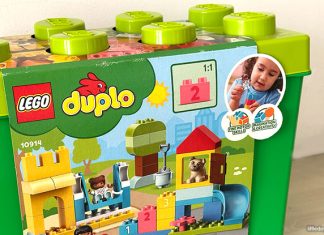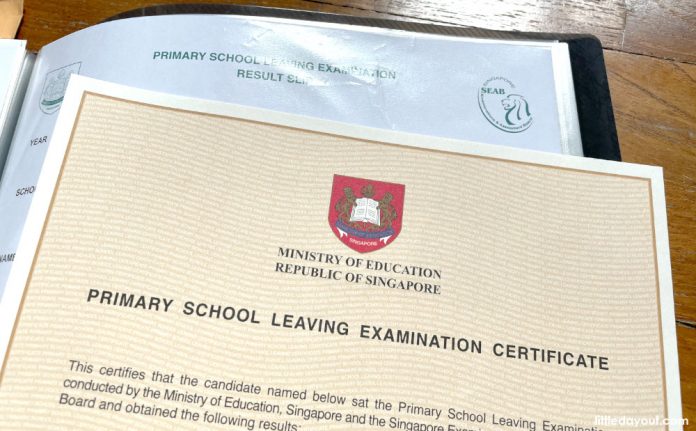
The PSLE Achievement Level (AL) scoring system was introduced in 2021 by the Ministry of Education (MOE) to address concerns about Singapore’s over-emphasis on academic results and give primary school children space to develop holistically. It replaces the T-Score system, which grades students relative to their peers.
With the new AL system, each child’s level of achievement is assessed on its own merits, regardless of how the rest of the cohort have performed. As students are awarded grading bands instead of marks, they are also less finely differentiated by their scores.
Since its inception, the system has attracted both praise and criticism.
Supporters applaud the move to reduce stress and do away with the need to chase after the last point to outperform others. Critics lament about how scoring just one less mark could lead to a drop to a lower band, which makes a big difference in the overall score.
MID AUTUMN FESTIVAL: Lanterns, Lights and Festive Fun
GIVEAWAY FOR ENEWSLETTER SUBSCRIBERS: LEGO DUPLO Deluxe Brick Box
Whichever camp you are in, it is worthwhile to get a good understanding of the PSLE AL scoring system so as to make the most of it.
How the PSLE AL Scoring System Works
While a higher T-score represented a better result in the old PSLE grading system, the new AL system works in the opposite way: the lower the overall score, the better.
Students are awarded Achievement Levels (ALs) based on their performance in PSLE subjects.
ALs are scoring bands, each covering a range of marks. Students whose scores are within the same range are placed in the same AL.
The following table shows all the possible ALs under the new PSLE scoring system and their corresponding mark ranges.
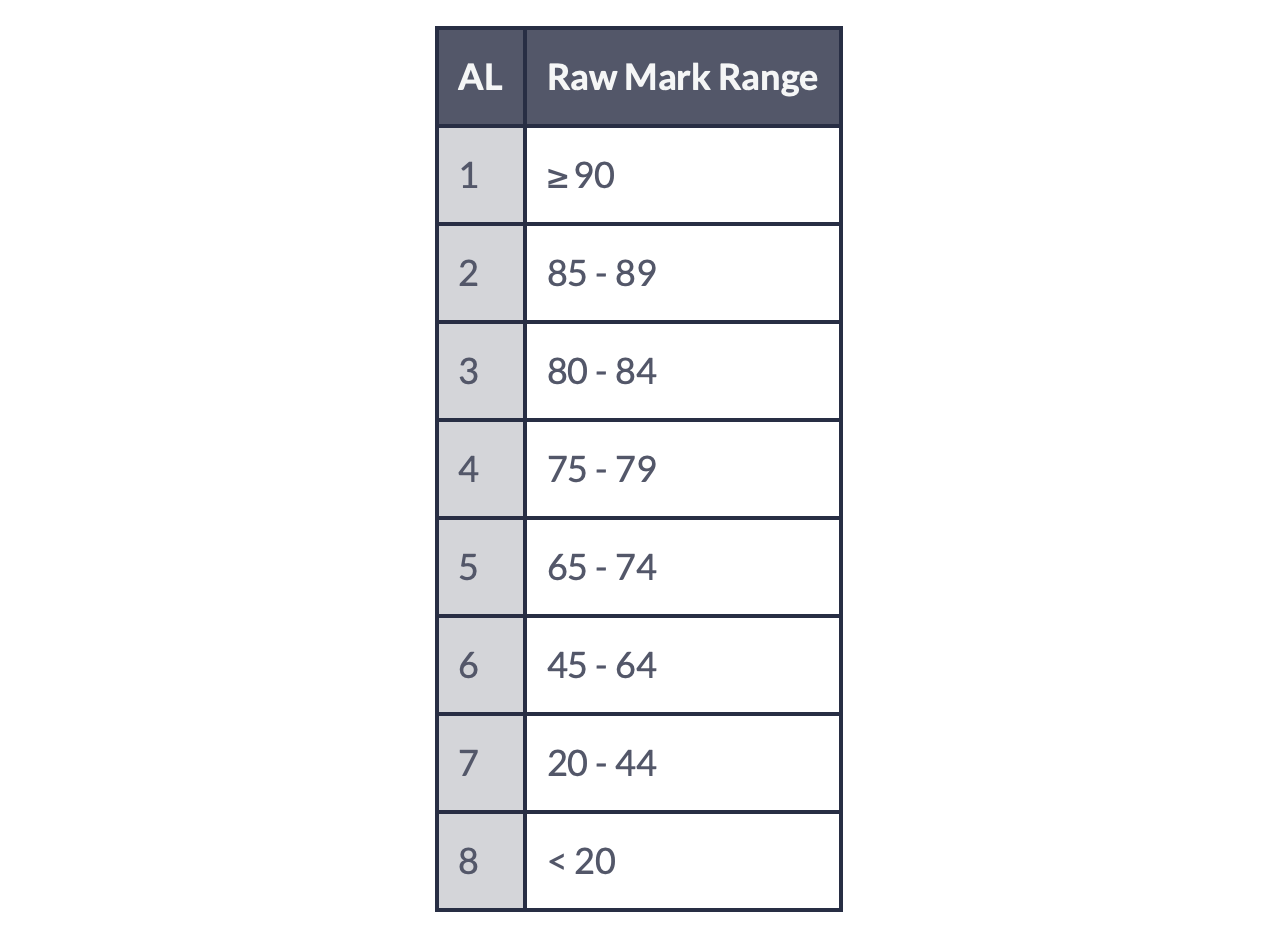
Therefore, if Student A and Student B receive 80 and 83 marks respectively for English, they will be awarded the same AL, which is 3 in this case. Being placed in the same scoring band negates the fine difference in their marks and equalises their chances of getting into a school of their choice.
A Primary 6 student’s PSLE score is the sum of the ALs for four subjects – English, Math, Science, Mother Tongue – and can range from 4 to 32, with 4 being the best possible.
Unevenly Distributed AL Mark Range
As can be seen from the table, the ALs are not uniformly distributed, with some levels including a wider range of marks and others covering a narrower range.
MOE’s perspective is that the scores of students in the AL5 to 8 bands are more spread apart, so a wider range of marks measures their performance in a more meaningful way for secondary school posting.
Grades for Foundation Level Subjects
For students who are taking subjects at the foundation level, their performance can result in three AL scores: A, B or C. These are eventually mapped to AL6, 7 and 8 respectively for the purpose of calculating the overall PSLE score.
Take a look at the table below for the range of marks covered under each foundation subject AL.
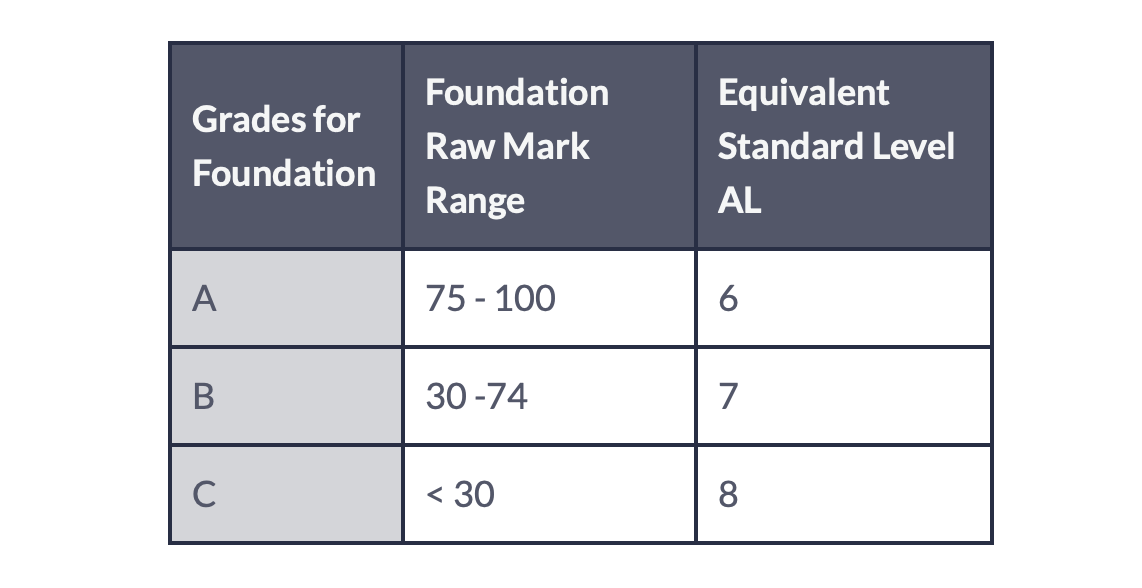
Familiarising Students with the AL System
To help students get used to the new PSLE scoring system, schools typically start reflecting their examination results in AL scores from Primary 5 onwards.
Making Secondary School Choices Based on the PSLE AL Scoring System
After taking the PSLE and securing a PSLE AL score, myriad options become available and decisions will have to be made in less than a week.
Which secondary schools should I include as my six choices? Should I go for the O-level Programme (OP), Integrated Programme (IP), International Baccalaureaute (IB) or NUS High Diploma? Will I have the time to take up a third language? Depending on their PSLE scores, these are some questions that students, together with their parents, will have to answer.
Along with the PSLE result, those who have been offered Direct School Admission (DSA) or are on the waitlist will also be receiving the final confirmation on their choices.
PG1, 2 and 3 Instead of Normal (Technical), Normal (Academic) and Express
As of 2024, PSLE graduands are no longer channeled into the Express, Normal (Academic) and Normal (Technical) streams. Instead, they will see Posting Group 3, 2 or 1 respectively on their PSLE result slips.
These posting groups are used only as a guide for the initial level at which students can take their Secondary 1 subjects and do not define their learning scope beyond that.
The group that each student is assigned to is dependent on the PSLE score received, as illustrated in the following table.
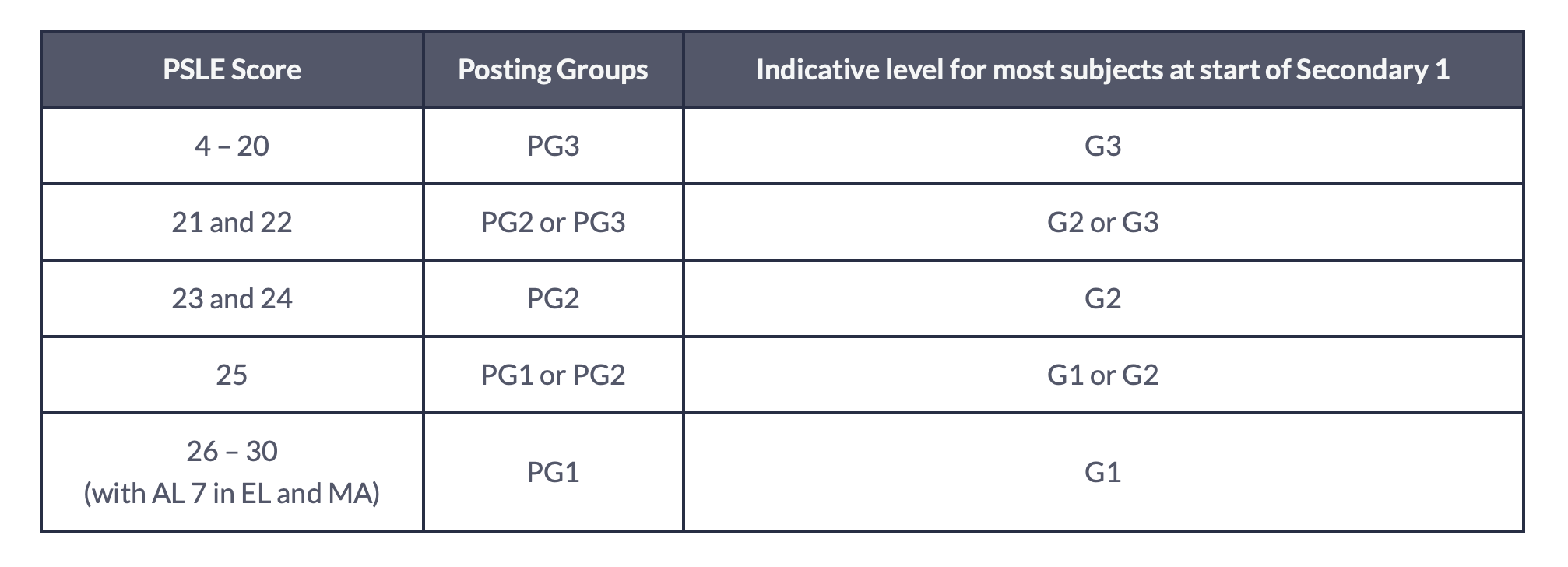
Indicative AL Cut-off Points
To help students make informed decisions about which schools to choose, MOE releases the cut-off points for all the secondary schools in Singapore on its SchoolFinder page, along with information ranging from the subjects and electives offered to DSA talent areas.
Do note that the cut-off point for each school is based on the score of the last student admitted in the previous year. So use it as a guide, but know that it changes every year depending on demand and supply.
Qualifying for Higher Mother Tongue Language and Third Language
For students who wish to take up Higher Mother Tongue Language, they will need to attain an overall PSLE score of 8 or better. Alternatively, their results should be within the 9 to 14 score range with at least an AL2 in Mother Tongue Language or a merit in Higher Mother Tongue Language.
Interested in learning a third language? Take note of the qualifying details in the table below.
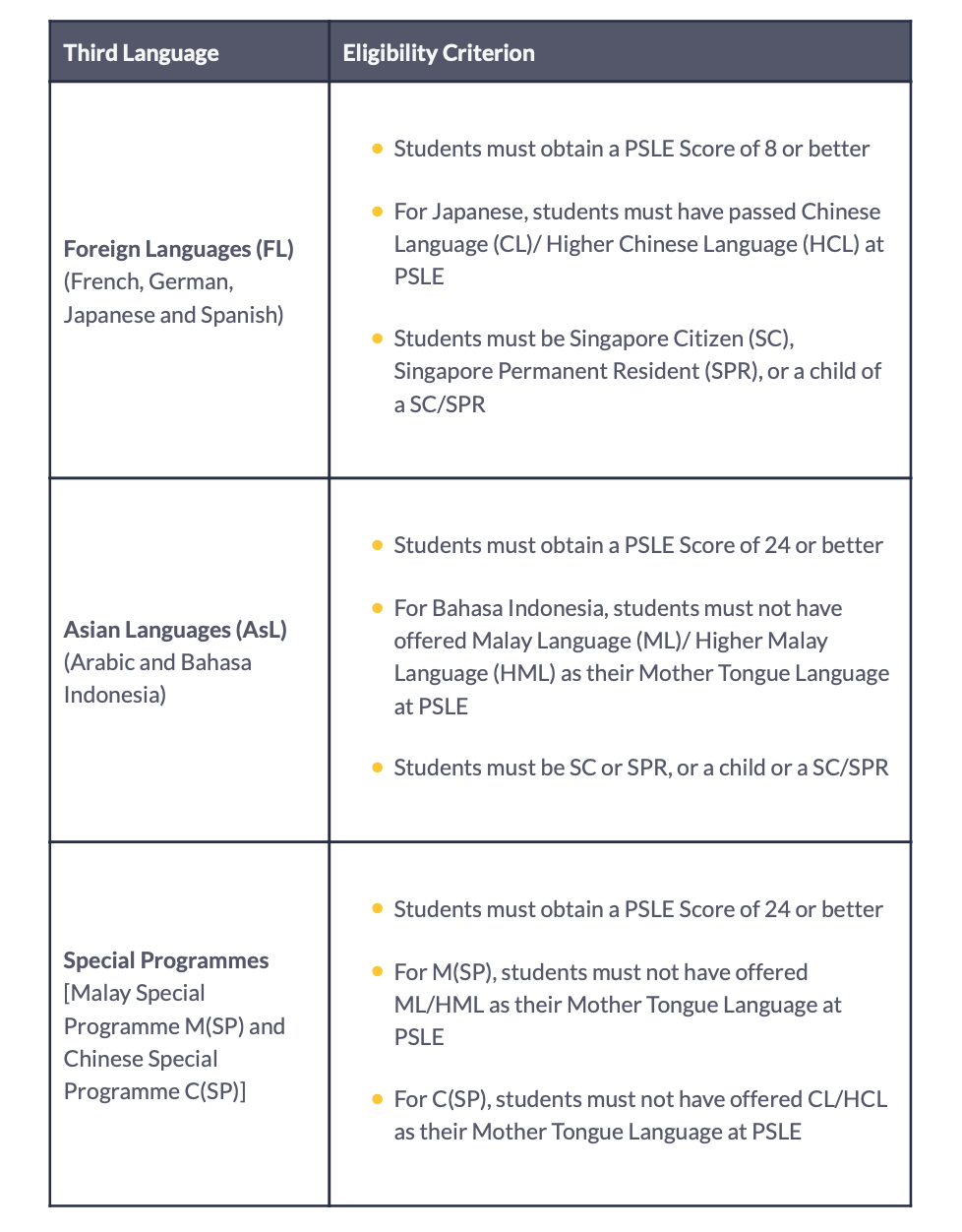
Multiple Students with the Same Score Vying for the Last Spot
As more students have the same PSLE scores under the AL system, there will be situations where there are fewer available places in a school than the number of applicants with the same score.
If the school in question is a Special Assistance Plan (SAP) school, applicants who have better Higher Chinese grades will be allocated a spot ahead of others. The following diagram gives a good example.
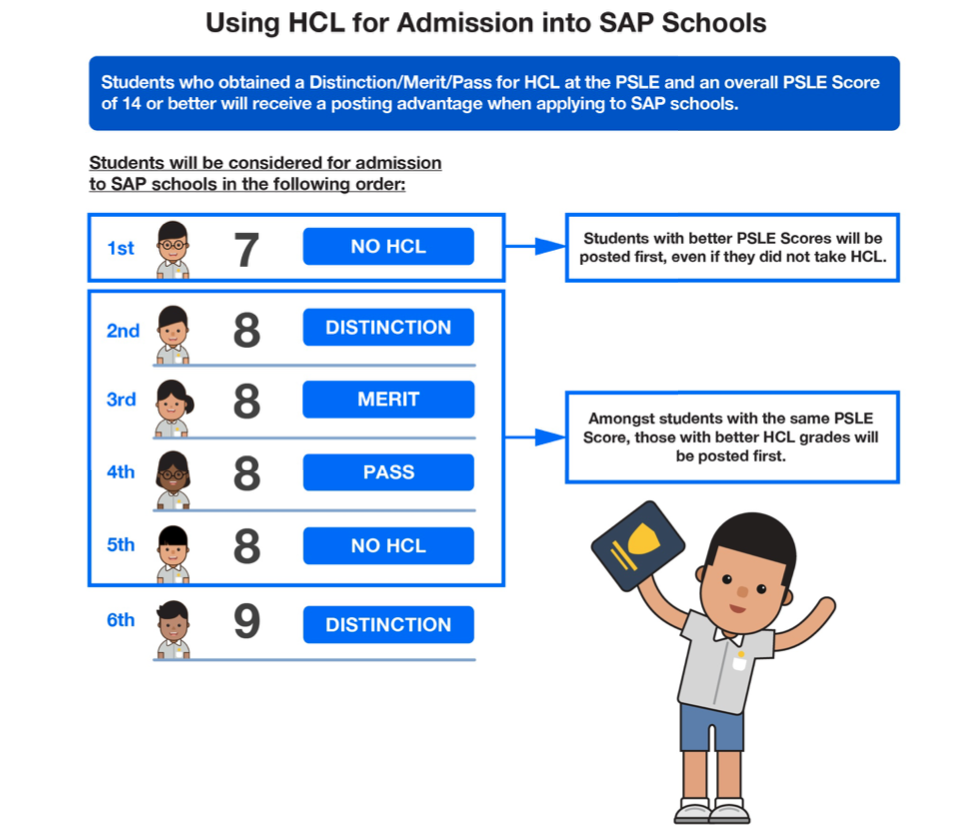
When everything is equal score-wise, three tie-breakers will be used to decide who gets the last spot. These are, in order of priority, citizenship, choice order of school and computerised balloting.
According to MOE, based on its simulation, only about 10% of applicants need to undergo balloting.
Appealing for School Transfer
Students who are not successful in getting the schools of their choice can appeal after the posting result is out.
For a reasonable chance, a student’s PSLE score should meet the cut-off point of the secondary school.
To find out what the current year’s cut-off is, a check with the school – either through its website or via a call – is recommended.
The appeal process is not complex. Hopefuls just have to fill out an online form and await the news from the school.
Manage PSLE and Secondary School Posting with Confidence
With a better grasp of the new PSLE AL scoring system, students and parents can navigate through the complexities of the PSLE and the accompanying secondary school posting with greater confidence.
If you enjoyed reading this story, you may also enjoy this one on PSLE Math.
















